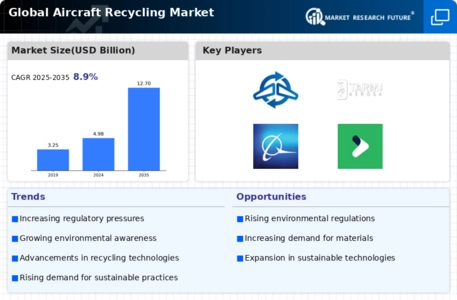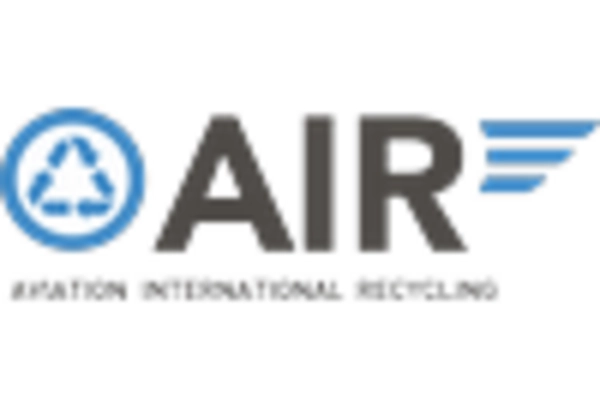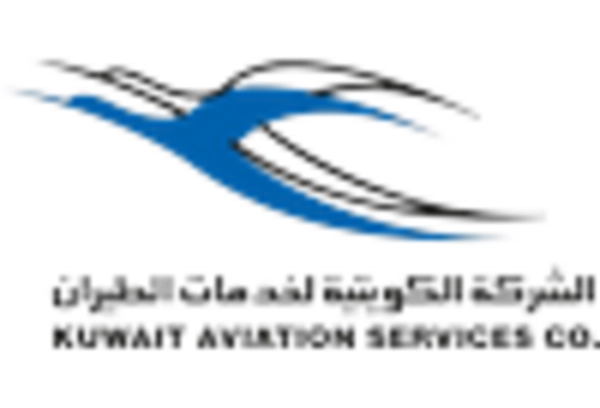Market Analysis
In-depth Analysis of Aircraft Recycling Market Industry Landscape
The market dynamics of the aircraft recycling sector depict a complex and evolving landscape influenced by factors such as technological advancements, environmental regulations, economic conditions, and industry trends. Aircraft recycling, also known as aircraft dismantling or end-of-life management, involves the sustainable disposal and recycling of retired or decommissioned aircraft to recover valuable materials and components while minimizing environmental impact. With the global fleet of commercial aircraft reaching record numbers and aircraft retirement rates expected to increase in the coming years, the aircraft recycling market plays a vital role in the sustainable management of aviation assets.
Technological advancements drive innovation and efficiency in the aircraft recycling market. Companies are investing in advanced dismantling techniques, such as automated disassembly systems, robotics, and laser cutting technologies, to streamline the recycling process and maximize material recovery rates. Moreover, innovations in materials science and recycling technologies enable the extraction and reuse of valuable metals, composites, and other materials from aircraft components, reducing waste and environmental pollution. Additionally, digital technologies such as asset tracking systems, predictive maintenance software, and data analytics optimize resource allocation, improve operational efficiency, and enhance safety in aircraft recycling operations.
Environmental regulations and sustainability initiatives shape the dynamics of the aircraft recycling market. Governments and regulatory bodies enforce stringent environmental standards and waste management regulations to minimize the environmental impact of aircraft dismantling activities. Compliance with regulations such as the Aircraft End-of-Life Management Directive in Europe and the Aircraft Recycling International Standard in the United States is essential for aircraft recyclers to obtain operating permits and maintain industry certifications. Moreover, aircraft manufacturers, airlines, and industry stakeholders are increasingly adopting sustainable practices, such as eco-design, material recycling, and circular economy principles, to reduce carbon emissions, conserve resources, and promote responsible end-of-life management of aircraft assets.
Economic conditions and market trends also influence the dynamics of the aircraft recycling market. The global aviation industry's cyclical nature, coupled with fluctuations in fuel prices, aircraft retirement rates, and fleet renewal cycles, impact the supply of retired aircraft available for recycling. Economic downturns or airline bankruptcies may result in an influx of retired aircraft into the recycling market, driving down scrap metal prices and reducing the profitability of recycling operations. Conversely, technological advancements, increased demand for sustainable aviation solutions, and government incentives for aircraft recycling and sustainable manufacturing drive growth and investment in the aircraft recycling market.
Industry trends such as aircraft retirements, fleet modernization, and the emergence of sustainable aviation initiatives shape the demand for aircraft recycling services. As airlines seek to improve fuel efficiency, reduce operating costs, and meet sustainability goals, there is a growing need for efficient and environmentally responsible aircraft retirement solutions. Moreover, the rise of electric propulsion, hydrogen fuel cells, and alternative aviation fuels creates opportunities for recycling and repurposing retired aircraft components for use in emerging green technologies. Aircraft recyclers must stay abreast of industry trends, market dynamics, and technological developments to capitalize on emerging opportunities and address evolving customer needs in the aircraft recycling market.

















Leave a Comment